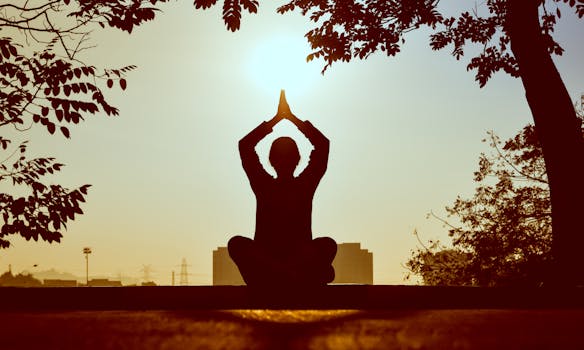
“
Mindfulness Practices for Stress Relief: A Comprehensive Guide
Introduction to Mindfulness and Stress Relief

Mindfulness practices for stress relief have become increasingly popular in recent years, and for good reason. With the demands of modern life, it’s easy to get caught up in stress and anxiety. Mindfulness practices offer a powerful way to reduce stress and improve overall well-being. In this article, we’ll explore the benefits of mindfulness practices for stress relief and provide a comprehensive guide on how to get started.
What is Mindfulness?

Mindfulness is the practice of being present in the moment, paying attention to your thoughts, feelings, and sensations without judgment. It’s about cultivating awareness and acceptance of the present moment, rather than getting caught up in worries about the past or future. Mindfulness practices can include meditation, yoga, deep breathing, and other techniques that help you focus on the present moment.
Benefits of Mindfulness Practices for Stress Relief

The benefits of mindfulness practices for stress relief are numerous. Some of the key benefits include:
- Reduced stress and anxiety
- Improved mood and emotional well-being
- Enhanced cognitive function and concentration
- Improved sleep quality
- Increased self-awareness and self-acceptance
Mindfulness Practices for Stress Relief

There are many mindfulness practices that can help with stress relief. Some of the most effective practices include:
- Meditation: Meditation involves focusing your attention on a single point, such as the breath, a mantra, or a physical sensation. Regular meditation practice can help reduce stress and anxiety by teaching you to focus on the present moment.
- Yoga: Yoga combines physical movement with deep breathing and meditation techniques. It can help reduce stress and anxiety by promoting relaxation and improving mood.
- Deep Breathing: Deep breathing involves focusing on the breath and slowing down your breathing rate. This can help calm the nervous system and reduce stress and anxiety.
- Body Scan: A body scan involves lying down or sitting comfortably and bringing your attention to different parts of the body, starting at the toes and moving up to the head. This can help release physical tension and promote relaxation.
Getting Started with Mindfulness Practices

Getting started with mindfulness practices is easy. Here are some tips to help you get started:
- Start small: Begin with short periods of mindfulness practice, such as 5-10 minutes a day, and gradually increase as you become more comfortable with the practice.
- Find a quiet space: Identify a quiet, comfortable space where you can practice mindfulness without distractions.
- Use guided recordings: Use guided recordings or apps to help you get started with mindfulness practices.
- Be patient: Remember that mindfulness is a practice, and it’s okay if your mind wanders. Gently bring your attention back to the present moment, and be patient with yourself as you develop your mindfulness skills.
Conclusion

In conclusion, mindfulness practices offer a powerful way to reduce stress and improve overall well-being. By incorporating mindfulness practices into your daily routine, you can experience the many benefits of mindfulness, from reduced stress and anxiety to improved mood and emotional well-being. Remember to start small, be patient, and find a quiet space to practice mindfulness. With regular practice, you can develop greater awareness, acceptance, and compassion for yourself and others, leading to a more fulfilling and meaningful life. For more insights on enhancing your life, check out Future-Proofing Your Investments.
See more:
https://www.mindful.org/
https://www.headspace.com/
https://www.calm.com/






